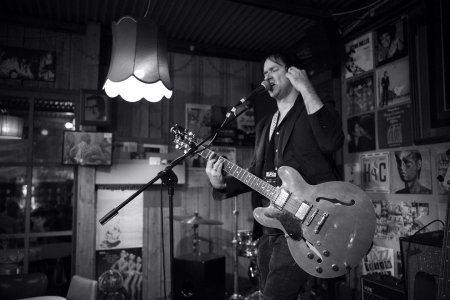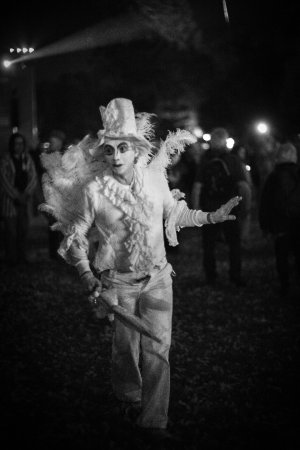Reinvention
Member
How does the experience of using a DSLR or mirrorless sensor converted to monochrome compare to that of a Leica Monochrom variant? How does image quality compare?
Thanks!
Thanks!
Freakscene
Obscure member
A converted camera has firmware that still assumes that the data coming in is colour and that the Bayer filter is there. The tonality and improvement in sharpness is not as good as from a dedicated monochrome camera.
The experience will depend largely on whether you want to use a dSLR or mirrorless camera or a digital Leica M. You can make an M a pseudo-mirrorless camera with a Visoflex (not the MM, but the 246, M10M and M11M work this way), but they are slower - the shutter closes and re-opens when using live view, and it’s not quick, not like a current Sony, Nikon or Canon (I haven’t used others, sorry). If you want to use a dSLR the Pentax K-3 iii Monochrome (kimono) is a good choice and has a dedicated monochrome sensor and firmware. Getting one may be difficult; the demand was a lot more than Pentax expected, but the large American sellers (the timezone in your profile suggests you are in the Americas) seem to have stock.
Marty

Leica M11M, 50mm Summilux ASPH.
The experience will depend largely on whether you want to use a dSLR or mirrorless camera or a digital Leica M. You can make an M a pseudo-mirrorless camera with a Visoflex (not the MM, but the 246, M10M and M11M work this way), but they are slower - the shutter closes and re-opens when using live view, and it’s not quick, not like a current Sony, Nikon or Canon (I haven’t used others, sorry). If you want to use a dSLR the Pentax K-3 iii Monochrome (kimono) is a good choice and has a dedicated monochrome sensor and firmware. Getting one may be difficult; the demand was a lot more than Pentax expected, but the large American sellers (the timezone in your profile suggests you are in the Americas) seem to have stock.
Marty

Leica M11M, 50mm Summilux ASPH.
Reinvention
Member
Thanks!
Conversions to Monochrome require removing the Microlens Array that sits over the photo-sites. The microlens array doubles the collection efficiency of most sensors. Removing the Color Mosaic Filter gives a 1 stop increase, but losing the microlens array offsets that for no net gain. A dedicated Monochrome sensor has the 1-stop advantage, as it will have the microlens array.
Reinvention
Member
Thanks!
Marty- Does the M11M have a mode where the shutter remains closed up until the picture is taken? The M11 required the shutter to be open for metering. I'd rather have a no-meter mode and use my Weston Master II than have the shutter stay open. I've had my M Monochrom for 11 years now. Leica replaced the CCD for free a few years ago- has the BG55 cover glass.The experience will depend largely on whether you want to use a dSLR or mirrorless camera or a digital Leica M. You can make an M a pseudo-mirrorless camera with a Visoflex (not the MM, but the 246, M10M and M11M work this way), but they are slower - the shutter closes and re-opens when using live view, and it’s not quick, not like a current Sony, Nikon or Canon (I haven’t used others, sorry).
Marty
Leica M11M, 50mm Summilux ASPH.
Godfrey
somewhat colored
How does the experience of using a DSLR or mirrorless sensor converted to monochrome compare to that of a Leica Monochrom variant? How does image quality compare?
Thanks!
No experience with converted cameras, but I'll say the dynamic range and resolution of the M10-M puts it easily in contention (and beyond) the results I can get with the Hasselblad 907x/CFVII 50c with B&W rendering of color captures. And the sensitivity is just astonishing ... captures at ISO 50,000 are spectacular!
I'm 'over the Moon' about what I see coming out of the M10-M. One of the best camera purchases I've made in the past decade.
G
Reinvention
Member
Thanks!
Freakscene
Obscure member
It’s hard to tell but I think it always meters off the sensor. I don’t think any of the manual metering modes changes this.Marty- Does the M11M have a mode where the shutter remains closed up until the picture is taken? The M11 required the shutter to be open for metering. I'd rather have a no-meter mode and use my Weston Master II than have the shutter stay open. I've had my M Monochrom for 11 years now. Leica replaced the CCD for free a few years ago- has the BG55 cover glass.
It’s much faster than the M10M or earlier cameras in live view but it’s still noticeably slower than the Sony, Nikon or Canon mirrorless cameras I’ve used. I like it because the highlight weighted metering mode is _much_ better than the metering on any of the earlier digital Ms and the general electronic responsiveness of the camera is better and the battery life is much longer. I was going through 3 batteries a day in Rajasthan and with the M10M I’d have needed a porter just to carry my spare batteries.
Marty
If the firmware were open source, we'd add an M2 metering mode. Shutter closed, Luna Pro in hand. Or the Weston.
Freakscene
Obscure member
The firmware is potentially manageable, but I don’t know. Whichever manufacturer makes a proper, capable mirrorless monochrome camera will have my interest.If the firmware were open source, we'd add an M2 metering mode. Shutter closed, Luna Pro in hand. Or the Weston.
It’s hard with external meters because the ISO standards are different enough that film meters often don’t work. In tricky situations I’ve tried it, but it’s never as good as the histogram. In ordinary light it works fine, but then you don’t need it. My response is to bite my lip and keep going. I’m never going to get a time machine to get Plus-X back, and film costs too much and has too many limitations for me now. This was tonight at a local venue; ISO 25,000.

Even over enthusiastically handled TMZ was pretty ordinary up there, but the M11M can keep going to 100,000 and do ok:

Remember when Weston rated Tri-X as Weston 320, and Kodak as ASA 400? But the conversion factor from Weston to ASA was 1x?
Even between the M9 and M240- the "Rated ISO" seems to be different. ISO 400 on the M240 seems more like ISO320 on the M9. My theory is the M9 uses Weston numbers.
Even between the M9 and M240- the "Rated ISO" seems to be different. ISO 400 on the M240 seems more like ISO320 on the M9. My theory is the M9 uses Weston numbers.
Share:
-
This site uses cookies to help personalise content, tailor your experience and to keep you logged in if you register.
By continuing to use this site, you are consenting to our use of cookies.

